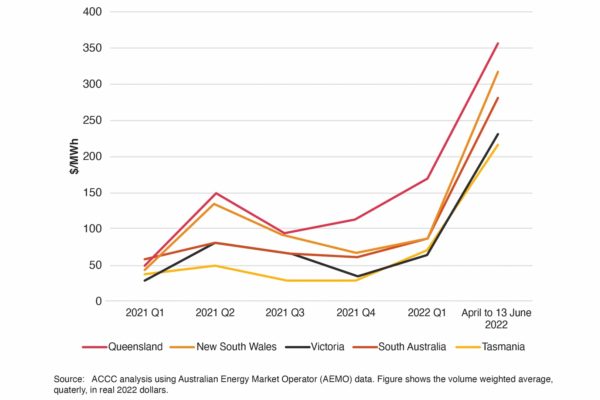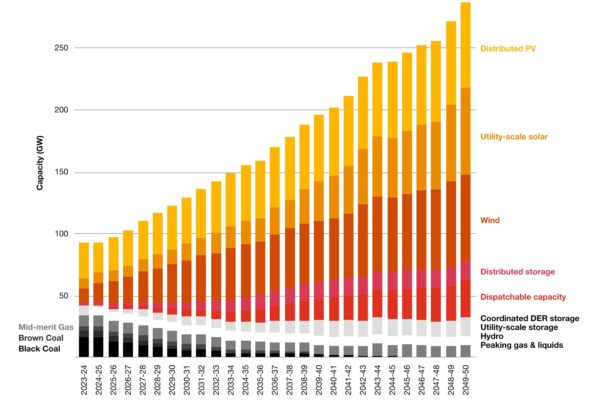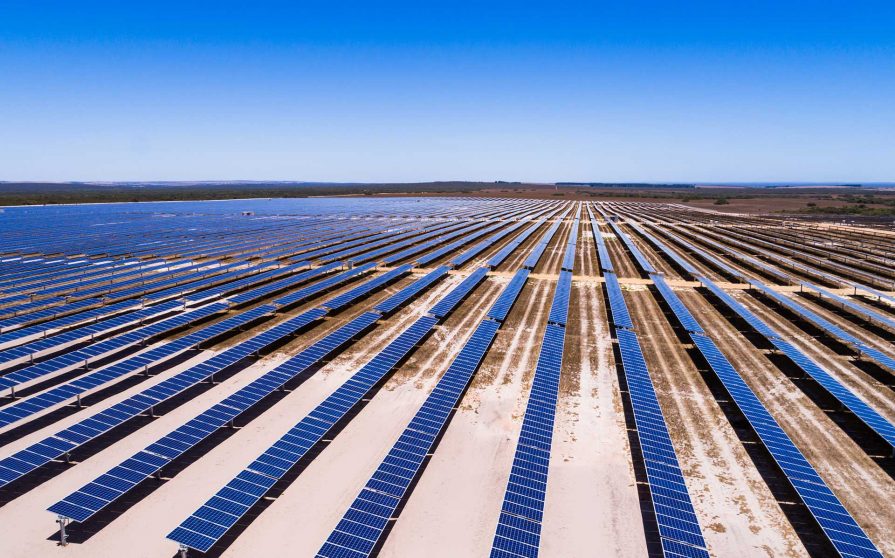With so much happening, there is no shortage of commentary and unprecedented attention on power markets. And, for those with patience and tenacity, there will also be plenty of commercial opportunities.
A change of federal government signals a change of tack
The spotlight was firmly on the energy sector in the lead-up to Australia’s May federal election, with Labor’s policies including Powering Australia and $20 billion Rewiring the Nation; a national electric vehicle strategy; amendments to the safeguard mechanism to incentivise greater emissions reductions; commitments to community battery storage systems and solar banks; and enthusiasm for green hydrogen and green metals.
With Labor elected alongside a record number of Greens and nine ‘teal’ independents, the events of May reflected a mandate from the Australian public for greater ambition and expenditure on renewable energy and climate policy as Australia moves towards net zero.
National electricity market disruptions
In June, there was a profound disruption in the National Electricity Market (NEM) due to the Russo-Ukrainian War, coal plant outages and flood-related impacts on coal logistics. Additionally, cold weather and soaring gas prices led power prices to spike to three to five times higher than they stood in Q1 of 2022.
On 15 June, the Australian Energy Market Operator (AEMO) took the unprecedented step of suspending electricity wholesale trading and activating the $300/MWh administered price cap (APC) (which exists to protect consumers from surging electricity costs), throwing the urgent need for more transmission, storage and renewables into sharp relief.
Whilst under the APC, some participants withdrew their supply sparking claims of anti-competitive behaviour. In response to these, in late June the ACCC led an inquiry into electricity market trading, investigating whether participants were participating in market misconduct and manipulating the spot market.

Image: ACCC
Discordance in the energy market continued into July, with a rule change request submitted to the market rule-maker the Australian Energy Markets Commission (AEMC), seeking to double the NEM’s APC to $600/MWh to better reflect thermal fleet input costs. The request followed claims by coal and gas generators that the current APC (set in the 1990s) inadequately reflects their input costs and should be increased to prevent the supply withdrawal events in June from reoccurring. Having determined the rule change to be urgent, the AEMC is currently expected to release a final determination on the APC rule change request by the end of September. While the June ‘coal (not gas) crisis’ is over, demonstrable pressure will remain in the Australian power market while the war in Ukraine continues and the ageing coal and gas fleet continues to be marred by operational issues.
Enter the Climate Change Bill and reforms to the National Electricity Objective and the Safeguard Mechanism
In early August, the passing of the Climate Change Bill through the Federal House of Representatives marked a momentous step toward enshrining in law national commitments to net zero by 2050 and 43% emissions reduction by 2030. The bill is currently expected to pass the Senate this week, having garnered the support of the Greens and several independents who amended the bill to explicitly state the 43% reduction is a floor (rather than a ceiling).
In mid-August, we saw federal and state energy ministers meet at the Energy Ministers Meeting (EMM) and agree on re-incorporating environmental and emissions reduction considerations into the National Electricity Objective (NEO). Once enacted, this landmark change will see electricity regulatory decisions, investments and rule-making decisions appraise climate impacts when the AEMC considers electricity rule changes and power infrastructure investments – removing the sometimes perverse outcomes under the current NEO and enabling further decarbonisation momentum for power markets.
A week later, the federal government released an industry consultation paper for their proposed reforms to the ‘safeguard mechanism’ (SM).
The Abbott government introduced the SM in 2016, requiring Australia’s 215 largest greenhouse gas emitters (who accounted for 28% of Australia’s total emissions in 2020-21), to keep their net emissions below an emissions limit or ‘baseline’ (with many concessions). The paper is the first step in another momentous reform process. It reflects the federal government’s commitment to strengthen the SM and ensure Australia meets its 2030 43% emissions reduction target and net zero commitments.
The consultation paper outlines a suite of proposed reforms to change how emissions baselines are set (including by removing the ‘headroom’ in the current SM design) and how baselines ratchet down over time. Indicative emission reduction rates for big emitters are expected to be between 3.5 and 6% per year to 2030. The consultation paper also considers introducing tradable credits for facilities that emit below their baseline and providing support to emissions-intensive, trade-exposed businesses (such as steelmakers and alumina refiners), including financial assistance and differentiated baseline ratchets.
The economy-wide consultation works to a tight deadline: submissions are due by the end of September, with a more detailed design released for feedback in December. The current aim is for the reforms to be legislated by March 2023 and come into effect from 1 July. This timeline exemplifies a real urgency by the federal government to transform the SM into an effective and credible emissions reduction tool, balanced to support big emitters to transition and decarbonise in an orderly yet demonstrative and prompt way. Of course, there are and will be a plethora of stakeholders in this consultation process, and many opinions and good ideas will be articulated before the final design is legislated … watch this space.
Changes signal opportunity for energy infrastructure investors and developers
There’s little doubt of an increased national appetite for a rapid transmission, storage and renewables roll-out and a cleaner, greener energy future. But there’s still a massive task ahead. To achieve the widely accepted ‘step change’ scenario outlined in the AEMO’s most recent Integrated System Plan (ISP), the pace of new renewables, storage, and transmission developments will need to dial up to maximum – as will the level of investment.

Image: AEMO
There’s plenty of cause for energy infrastructure investors and developers to be optimistic in this opportunity-rich time and place. But can we be confident that energy markets are changing in the right way and at the right pace and scale? Given the interrelatedness of all energy system components, it’s easy to solve one problem and find another has been created.
In our view, change is never simple, but it must happen. The success of the energy transition will rest on three critical components:
- more transmission build-out
- more storage build-out
- more renewable energy build-out
And, all three builds need to happen quickly. To move at pace, the sector will need to:
- remove lengthy transmission approval processes
- streamline generator grid connection processes
- resolve current (and likely future) supply issues across the energy value chain (personnel, materials, equipment, shipping, critical minerals)
- build trust with communities and improve environment, social and governance performance, and
- obtain the all-important revenue offtake arrangements needed to make projects bankable.
All of these factors are needed for successful projects in the renewable energy revolution.
As the new energy picture takes shape, it will also remain important to keep a watching-brief on the implementation of new energy policies and the progress of long-awaited energy market reforms.
Renewable Energy Zones are underway
In New South Wales, Victoria and Queensland (and soon Tasmania), there is solid progress advancing Renewable Energy Zones (REZ), the transmission ‘highways’ connecting areas of good solar, wind and pumped hydro resources to the NEM. Tenders are underway to build the transmission infrastructure, and auctions will soon commence for generator access rights to connect and dispatch.
Capacity mechanisms divide opinion
Another policy subject of particular interest and divided opinion is the need for a so-called ‘capacity mechanism’4 being assessed by the Energy Security Board (ESB). Currently proposed to be operational by July 2025, state and federal energy ministers also discussed the capacity mechanism at their mid-August EMM. Energy ministers have agreed to take ‘more active control’ of the NEM 2025 redesign process from the ESB, focusing more on coal closures and new technologies – however, what this means going forward is yet to be determined.
Wildly unpopular with many in the power market, a capacity mechanism creates a new revenue stream for ‘firm’ (non-intermittent) generators (coal, gas, hydro and batteries). These entities would be rewarded for having generation capacity/plant available (but not necessarily operating) during certain periods, theoretically ensuring that supply will be adequate to meet demand. Although similar mechanisms exist in other international markets that are transitioning to renewables, there is disagreement over how successful such a mechanism will be at improving supply security (refer to what happened in June with coal plant unreliability) while potentially extending the lives of thermal plants.
If a capacity mechanism does prevail, the devil will be in the detail of the design. To achieve net zero goals, while there is a circa 10-year transitional role for more flexible gas plant to play, it will be critical to ensure the lives of thermal generators are not prolonged unnecessarily and the exit of coal (and later gas) is orderly.
Arguably, the mechanism should only be applied to new-build firm plants and will only be successful for net-zero goals if it includes an emissions element, such that generators only receive a ratcheted capacity payment if they are below a certain emissions level.
Given the design difficulties of the capacity mechanism, consideration is also due to alternative options and technologies for providing firming capacity and improving energy security. Perhaps the most promising of these alternatives is what some are calling a Renewable Energy Storage Target (REST) – a target much like the Renewable Energy Target but designed to incentivise storage (and in particular deep/long duration storage) rather than generation.
Addressing energy storage is key
If we are to reach Australia’s renewable targets, and ensure the energy grid is capable of handling the growth anticipated by the ISP, storage capacity will need to grow by 59 GW (20 times the current capacity) by 2050. Although we know storage is a challenge, it is currently the least advanced part of the renewables value chain.
Deep storage chemical batteries (of long-duration (12+ hours) are likely to be the quickest to deploy and easiest to site, but they are currently uneconomic and underdeveloped at this long-duration.
A REST could provide a form of subsidy to storage facilities, helping to overcome some cost-curve issues and incentivising the development of larger and deeper storage systems. The introduction of a REST would provide a subsidy and broader market for storage technologies, incentivise research and development into new storage innovations, and provide certainty around storage demand, supply and development. Contemporaneously, the value chains of the critical minerals which comprise chemical batteries also need to develop and accelerate.
Opportunity in complexity
Reshaping the energy market to deal with the deeply complex challenges of the rapid shift to renewables will take time, patience and collaboration across all parts of the sector. We eagerly await the outcomes of these and other energy market reforms, which will give investors greater clarity and confidence to make the most of the opportunities to help build a clean, affordable and reliable energy future for a more sustainable Australia.
Author: Katie Barnett is a Partner in PwC Australia’s Energy Transition Deals team providing commercial, transactional and financial advisory services to PwC clients since 2020. Katie has deep utility-scale renewable energy, power market and project finance expertise, having working in energy investment banking for 10 years, subsequently gathering experience in solar, wind, hydro, and geothermal projects during five years at Origin Energy and more recently as the founding CEO of PowAR (now Tilt Renewables) a +800 MW, $1.5 billion portfolio of operating wind and solar projects.
The views and opinions expressed in this article are the author’s own, and do not necessarily reflect those held by pv magazine.
This content is protected by copyright and may not be reused. If you want to cooperate with us and would like to reuse some of our content, please contact: editors@pv-magazine.com.








This is a great summary of the considerations surrounding the renewables energy transition in Australia. It brings together and puts into perspective the key issues of this complex power sector conundrum in a balanced and practical way. It should be read together with the recent article by Simon Bartlett which identifies the risks in cost and time blow-outs for transmission projects underpinning this energy transition.
The promise of a clean, green, reliable energy future is easier said than done. This transition is necessary but will take longer than any public official is prepared to say.